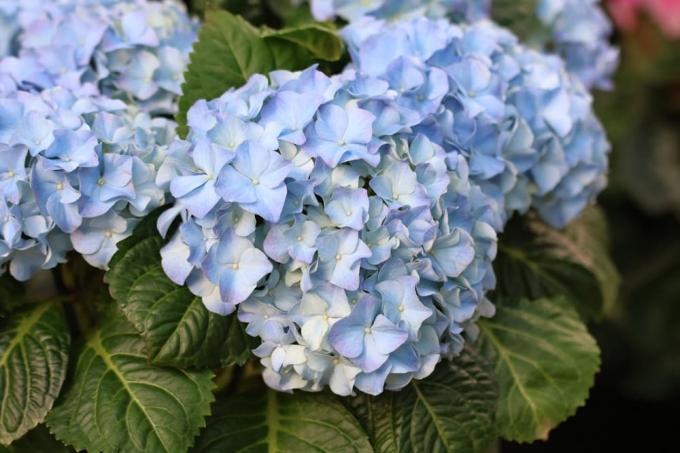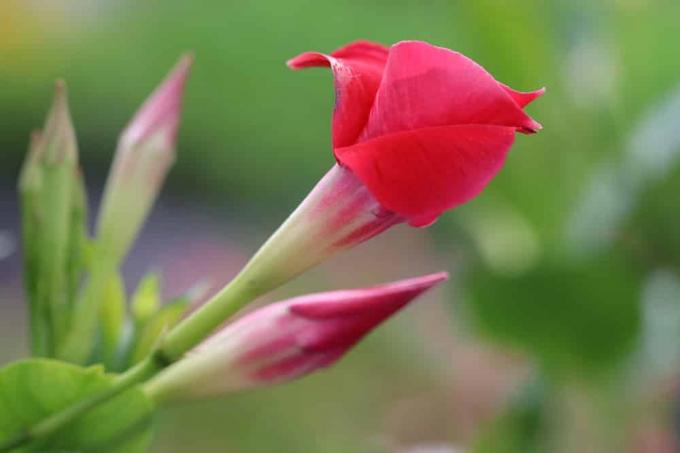

Table of contents
- Included Poison Hydrangeas
- symptoms of poisoning
- long-term consequences
- Smoking rhododendron flowers
- Poison Rhododendron
- symptoms
- Hibiscus poisonous?
Hydrangea, rhododendron or hibiscus blossoms are decorative, which is why the plants are often cultivated in gardens. However, for some time now, rumor has it that these buds act like marijuana when smoked. But this is dangerous misinformation, as the buds are highly toxic, especially when smoked.
Included Poison Hydrangeas
Hydrangeas are repeatedly picked and smoked as a substitute for marijuana, especially by young people. However, the substances contained can become very dangerous if they are consumed in large quantities. So the following poison is contained in hydrangeas:
- hydrogen cyanide
- hydrangin
- Hydrangeol
- saponins
While the hydrocyanic acid when it is ingested ensures that the red blood cells are destroyed and thus If no more oxygen is transported, the absorption of other toxins leads to anxiety and Dizziness. Sensitive people in particular can then experience a threatening state of intoxication which, however, has nothing in common with the intoxication of consuming marijuana or hashish.
symptoms of poisoning
If the flowers of hydrangeas are smoked consciously, several are needed for this. This means that consumption is not accidental and there is a higher concentration of ingested toxins when the smoke is inhaled into the lungs. From here, the toxins enter the bloodstream and can even cause life-threatening symptoms:
- choking fits
- cramps
- unconsciousness
- rosy skin
- tachycardia
- dizziness
- feelings of anxiety
The effect of smoking hydrangeas is therefore not a feeling of intoxication, as is the case, for example, with the consumption of cannabis is triggered, but simply dangerous lack of oxygen, since the oxygen is no longer in the blood is forwarded. Because the plant does not contain any substances that have a hallucinogenic effect.
Tip:
Above all, people who are allergic to the contained toxins even with a slight contact are particularly at risk when they smoke the flowers. However, such a contact allergy is usually hidden, and those affected usually know nothing about it. Therefore, it can be particularly dangerous in such a case.
long-term consequences
Little information is available about the long-term effects. But the theoretical consequences can range from unconsciousness to disorders of the central nervous system and death from heart failure. This is mainly due to the hydrocyanic acid it contains, which causes the lack of oxygen in the blood.
Tip: If the symptoms are recognized in a person, then the emergency doctor should be called for help immediately. A call to the poison control center can also be helpful for the first measures. A person who has smoked hydrangea or rhododendron should seek medical attention immediately, no matter how severe the symptoms are at the moment.
Smoking rhododendron flowers

In China, Tibet and Nepal in particular, rhododendron plants are cultivated for the purpose of obtaining intoxicants. Because here it is common to chew, snort or smoke the plant parts. But the rhododendron is also dangerous for us humans due to its toxicity, especially when it is absorbed into the body, in whatever way. The honey from the rhododendron blossoms, which is also often used as a so-called intoxicant, should also be consumed with caution. The usage in Asian countries is as follows:
- dried flowers, stems and leaves are smoked
- Bark and leaves are used as tobacco
- Tobacco can be sniffed, smoked, or chewed
According to Chinese teachings, anyone who consumes only a small amount of tobacco appears as intoxicated as someone who is very drunk. However, if too much tobacco is ingested, it can be dangerous and even fatal.
Tip:
Drugs are never a solution, especially on the toxin-laden rhododendron and hydrangea flowers should be avoided in any case due to your own health, even if it can be reached at low cost are.
Poison Rhododendron
All parts of the rhododendron are poisonous, especially the leaves, flowers and pollen. The proven toxins contained are the following:
- diterpenes
- Grayanotoxins
- acetylandromedol
- tannin
- there are also various essential oils
Even a single flower or leaf can lead to severe symptoms if accidentally consumed. If these are even absorbed through the smoke into the lungs, it can become very dramatic and dangerous under certain circumstances.
Tip:
In China, ginger is given to treat the symptoms of poisoning caused by eating rhododendrons. Whether this has the desired success, however, is not further proven. Therefore, an emergency doctor should always be consulted if symptoms occur.
symptoms
If the poison from the rhododendron has been ingested through the smoke, then the following symptoms may occur, which also should not be taken lightly, especially when smoking many flowers or leaves in a row became:
- skin tingling
- irritation of the mucous membrane
- Diarrhea
- Vomit
- dizziness
- slowed heartbeat
- cardiac arrhythmias
- respiratory paralysis
Especially the dizziness that can occur with poisoning suggests an intoxicating effect to the consumer, which, however, is not the case. Because the rhododendron only contains poisons, but no intoxicants that would be equated with marijuana or hashish consumption.
Hibiscus poisonous?

Neither the leaves nor the flowers and the entire hibiscus plant are poisonous. Therefore, of course, the plant parts can all be used and smoked as tobacco. But there will be no intoxicating effects, nor can the smoker get poisoned by the smoke, causing dizziness or other discomfort. Thus, the hibiscus is completely harmless, but it is also not used as a drug substitute.
Sources:
www.gizbonn.de
hempjournal.de
 garden editorial
garden editorial I write about everything that interests me in my garden.
Learn more about potted plants

Spider Flower, Cleome hassleriana: Care Instructions
Spider flowers get their name from their spider-like appearance. Many hobby gardeners shy away from cultivating the beautiful exotic species. When it comes to maintenance, there are just a few things to keep in mind.

How do I care for a gentian tree? Lycianthes rantonnetii
A gentian tree can be a decorative enrichment both on the balcony and in the garden. For the culture, however, some criteria must be observed. This includes, among other things, the high nutrient content that is required for flowering.

Overwinter pampas grass | 16 tips for winterizing
Pampas grass is a popular ornamental plant in the garden or in tubs, which can be attractively integrated into a wide variety of garden ideas thanks to its decorative fronds. They are considered hardy, but need suitable winter protection in Central Europe due to possible moisture damage.

Leadwort, plumbago: care from A to Z
Leadwort (Plumbago) hides one of the most attractive potted plants of all. The magnificent shrub impresses above all with its blue flowers, which it produces from May to autumn, transforming terraces and balconies into a luminous oasis.

Peasant hydrangea, Hydrangea macrophylla - care and pruning
With its attractive, ball-shaped umbels of flowers in white, pink, purple, red or blue, the hydrangea is one of the most decorative garden plants. Here's what you need to know about the farmer's hydrangea so that it blooms and thrives lushly in your garden.

Dipladenia 'Sundaville red' - Caring for the Mandevilla as a houseplant
With its bright red, trumpet-shaped flowers, Dipladenia 'Sundaville red' - which is a hybrid of the tropical Mandeville or Mandevilla is a beautiful eye-catcher on the balcony or terrace. However, the climbing plant can also be easily maintained in the living room.
